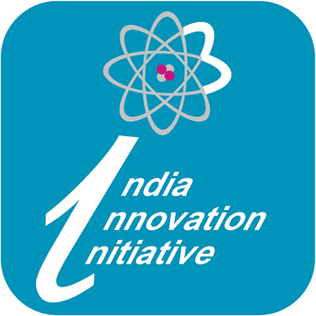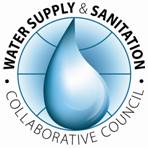/regions/political
Political
Estimation of irrigation return flow in Lokapavani area of KR Sagar command in Karnataka - A research report by National Institute of Hydrology
Posted on 21 Jun, 2010 12:22 AMThe study deals with the estimation of hydrological soil properties of the area of Lokapavani River in KR Sagar Command in Mandya district of Karnataka. The properties determined are soil texture, porosity, saturated hydraulic conductivity, specific gravity and soil moisture characteristics.
The disturbed and undisturbed soil samples from eighteen locations along different depths were collected and analyzed. Eighty-five disturbed soil samples were used to determine the grain size distribution, porosity, specific gravity and soil moisture characteristic curves with the help of electromagnetic sieve shaker, master sizer, GeoPyc and pressure plate apparatus. Twenty undisturbed soil samples were used to determine saturated hydraulic conductivity with ICW Permeameter.
Surface water quality assessment of river Kali with special emphasis on non point source of pollution – A research report by the National Institute of Hydrology
Posted on 20 Jun, 2010 11:52 PMThe study conducts an extensive water quality survey in sixteen reaches of Kali river in western Uttar Pradesh to estimate the inflow of two major nutrients (nitrate and phosphate) from point and non-point sources. The study intends to validate the present model based on the principle of conservation of mass and reaction kinetics phenomenon.
Data was taken for one annual cycle on a monthly basis and criteria developed to compute the non point source load from nine sub-basins in various stretches of the river. The computed loads at each section obtained from the predictive equation have been compared with the values observed in the field. The performance of the developed equation has been evaluated using percentage error estimation and correlation statistics. Remote sensing and geographical information systems (GIS) have been used to develop correlation between basin characteristics and non-point source loads.
Effective groundwater management in urban areas
Posted on 20 Jun, 2010 06:32 PMOften groundwater pumping is undertaken assuming the resource to be infinite. This myth has been shattered in the last few decades with increasing scarcity and deterioration in terms of quality as a consequence of over-exploitation and mismanagement of this resource to meet competing demands for drinking water and other needs in urban cities. However, managing groundwater is not an easy task.
Approach and achievements of individual water management by Dr Choudhury of Guwahati
Posted on 18 Jun, 2010 10:07 PMIn the recent past, Dr. Dipul Choudhury from Guwahati (Assam), managed to ensure rainwater harvesting arrangements in his newly constructed multistoried building at Tarun Nagar, Guwahati (Assam).
Tairne wala samaj doob raha hai: An essay by Anupam Mishra on the Bihar Floods
Posted on 18 Jun, 2010 09:55 PMSmall and big dams and big embankments were constructed in this region, without understanding the nature of the rivers which have always changed course or overshot their banks. Assuming however, that the river will not change course, the Government adopted a skewed development program - that of building embankments to contain the river.

Renukaji Dilli Ke Nalon Mein - A documentary about the movement against the proposed Renukaji Dam Project
Posted on 18 Jun, 2010 05:22 PMThe Renuka Dam Project proposed over the river Giri Ganga (a tributary of the Yamuna) located some 300km away from Delhi, is a joint project of the governments of Himachal Pradesh (HP) and Delhi, to be constructed by the Himachal Pradesh Power Corporation Limited (HPPCL) in Sirmaur district of HP.

Climate refugees: Implications for India
Posted on 18 Jun, 2010 03:56 PMA widespread view that is gaining ground is that climate related migration could evolve into a global crisis by displacing a large number of people from their homes and forcing them to flee. Christian Aid postulates that a billion people could be permanently displaced by climate change related phenomenon such as droughts, floods and hurricanes (Christian Aid 2007). The fourth assessment report of the Intergovernmental Panel on Climate Change (IPCC) mentioned the “potential for population migration” due to increase in the number of areas affected by droughts and an increase in the intense tropical cyclones activities (IPCC 2007: 18). In particular, it seems likely that significant numbers of people will be displaced, either temporarily or permanently, from their homes as a consequence of global warming (Stern 2006). Available scientific evidences indicate that a large number of people might be displaced due to climate change. However, much of the literature on this issue refers to the question of whether the people forced to migrate as a consequence of climate change should be described as climate refugees. There is no internationally agreed definition of the term “climate refugee” and the extent to which these displaced persons constitute a separate identifiable group. Although it is now widely recognised that climate change will significantly adversely affect India, there are few studies available on how climate change is going to affect the migration of people. It has been asserted that 70,000 people out of the 4.1 million living in the Indian part of the Sundarbans islands would be rendered homeless by 2020 (EPW, 6 June 2009).
Agilent Technologies: India Innovation Initiative - i3
Posted on 18 Jun, 2010 12:41 PMContent and Image Courtesy: India Innovation Initiative

The objective of the India Innovation Initiative project is to create an innovation eco-system in the country by sensitizing, encouraging and promoting innovators and facilitating commercialization of the innovations.
DST and CII jointly launched the Young Inventors initiative "Steer the Big Idea" in the year 2004. It was aimed at capturing the innovative ideas from young innovators for the benefit of Industry & society. In 2005, CII & DST joined hands with Industry to form IRIS - Initiative for Research and Innovation in Science. IRIS has been focused so far on school students i.e. innovators below the age group of 18 years. Agilent has been organizing the Agilent Engineering and Technology Awards through which it has been encouraging engineering students towards hands-on engineering in India and recognizing innovation.
CII & DST have now joined hands with Agilent to launch the nation-wide innovation competition for all innovators above the age group of 18+.
WSSCC : Expressions of interest for a country programme monitor for a sanitation and hygiene programme
Posted on 18 Jun, 2010 12:06 PM
The Water Supply & Sanitation Collaborative Council's (WSSCC) Global Sanitation Fund (GSF) calls for Expressions of Interest for a COUNTRY PROGRAMME MONITOR for a Sanitation and Hygiene Programme in India
WSSCC invites suitably qualified firms/organisations to express interest in the role of Country Programme Monitor (CPM) for the GSF grant programme in India. The initial contract duration is for 2 years, extendable up to 5 years upon satisfactory performance of services.
Need to bring focus of water & agriculture policies onto rainfed farming : SANDRP May '10
Posted on 18 Jun, 2010 11:03 AM![]()
The Dams, Rivers and People issue for Apr-May 2010 is out. The state government policies, programmes and practices in water resources and highlights the need to bring focus of water & agriculture policies onto rainfed Farming. It is likely to yeild better economic, hydrologic, sustainable, equitable and climate friendly results and foodgrains production as per our future demands.